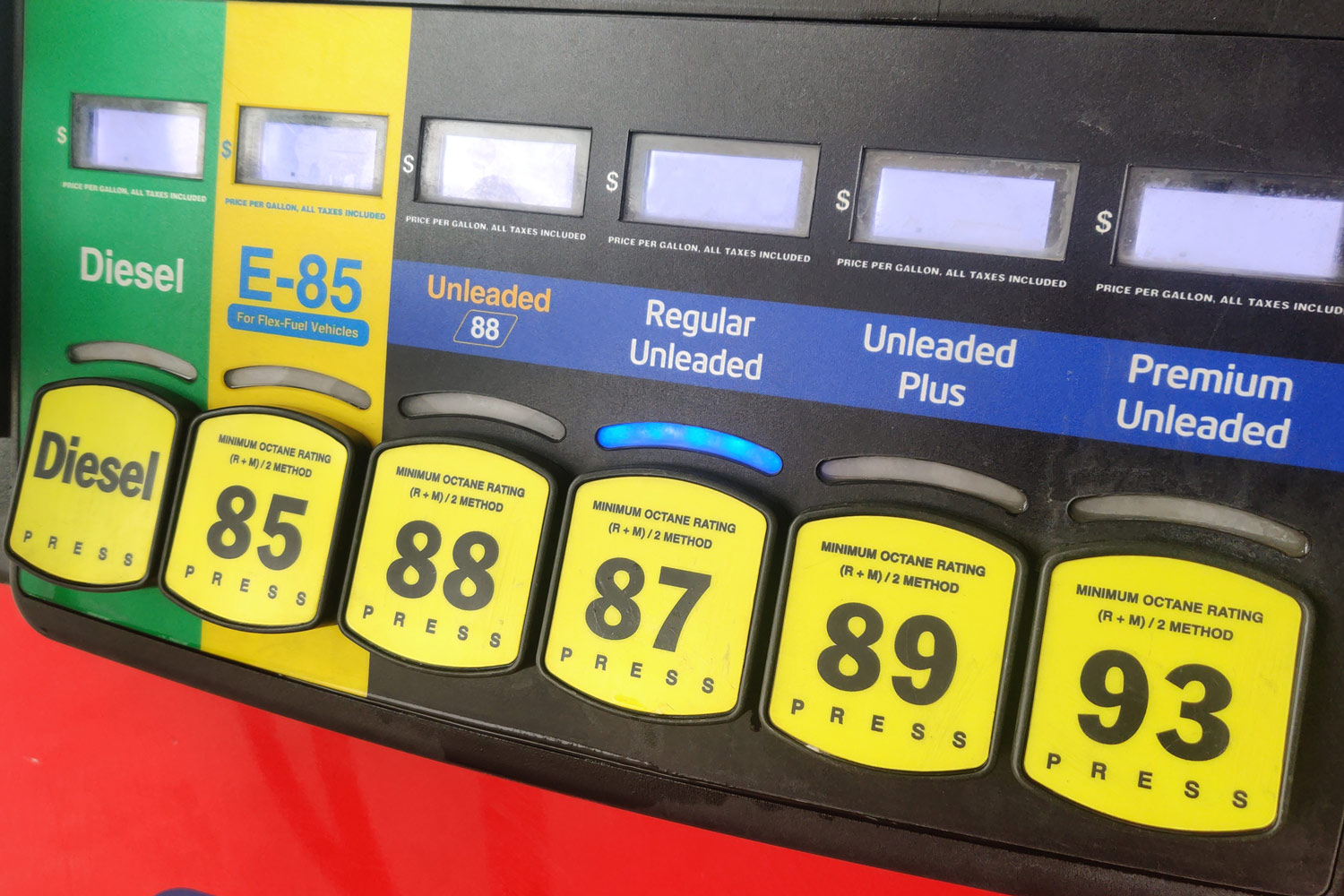The Reason 89-Octane Gas Exists
Fueling stations needed options to give people during the transition from leaded to unleaded.
 Austin Lott | Capital One
Austin Lott | Capital One
After the EPA banned the use of leaded gasoline in new vehicles starting with the 1975 model year, it took about a decade for gas stations to stop selling the stuff. Customers weren't keen to make the switch, though, as unleaded gasoline requires more refining to achieve the same octane rating as leaded gas so it costs more. This left many car owners — particularly those with carbureted vehicles — paying the exorbitant price of $1.50 per gallon for the necessary high-octane fuel.
So, gas stations started offering a mid-grade option, hoping it would attract thriftier drivers and anyone who wanted better-than-average knock resistance but at a more reasonable price than premium. Some even believed this new grade would usurp regular unleaded in time. It did not.
89-Octane Gas Didn't Catch On
As gas prices rose even more, engine technology improved and owners retired their carbureted vehicles from service, consumers presumably decided that 87-octane gas was good enough. Their owner's manuals agreed. According to the EPA, no vehicle recommended mid-grade unleaded gas until about a decade ago.
Still, 89-octane gas remains on the menu. That's likely for two reasons. Some people buy it. Mid-grade fuel accounts for 8% of unleaded-gasoline sales. It also generally doesn't cost anything extra to offer it. Most gas stations don't have a separate tank for 89-octane gas. Instead, when you press that middle button, the machine pulls equal amounts of fuel from the regular tank (typically 87 octane) and the premium one (usually 91) to create 89 octane
No Vehicles Need 89-Octane Fuel
Only a handful of modern vehicles — all from Stellantis brands — call for 89-octane gas. Even then, it's not required, only recommended. Using 87-octane fuel in any of them won't harm the powertrain. At worst, it could cause the engine computer to slow the ignition timing a bit or adjust the fuel injection, potentially lowering fuel economy or performance.
Your Vehicle Won't Perform Better With Mid-Grade Fuel
A few automakers, including Ford and Mazda, have designed turbocharged engines that produce more power on premium gas than they do on regular. In those cases, the engine computer detects the higher knock resistance of the fuel and uses it to its advantage, advancing the ignition timing and/or upping boost pressures to improve performance.
The engine, however, has to be designed for that. Your Toyota RAV4 won't see a performance benefit from a tankful of mid-grade or premium.
Some States Eschew 89-Octane Gas
In high-altitude states such as Colorado and Wyoming, many gas stations don't offer 89-octane gas, instead using the middle pump for 87 and the leftmost one for 85. That's because, as you move away from sea level, the air becomes thinner and the risk of knock decreases. Therefore, a lower-octane and less expensive fuel will often suffice, although automakers and engineers recommend against it, even if you live in the clouds.
Written by humans.
Edited by humans.
 Beth Nichols
Beth NicholsAfter graduating from the University of Michigan, Beth Nichols stumbled into automotive journalism and found her footing, jumping between a few car magazines before going freelance. Her head, once full of useless facts about literature and art history, now holds useless facts about vehicles. She edits, checks, and occasionally creates content for Capital One, and though she understands it’s customary to write a bio in the third person, I don’t like it.
Related articles
View more related articles